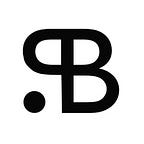How Typography Changed the World
Our history has been shaped by the shape of the letters we write
As written language changed the course of human history, the evolution of printing revolutionized the spread of information. The simple fact that the Latin alphabet could be printed using a small number of discrete, repetitive symbols helped popularize moveable type, handing Europe a crucial advantage at the beginning of the Renaissance. The printing press kicked off the scientific revolution that fast-tracked us to the current digital age.
In the year 1448, in Mainz, Germany, a goldsmith named Johannes Gutenberg was experimenting with a lead alloy and a handheld mold. His aim was to speed up the process of putting ink on paper, but what he did was speed up history. Gutenberg’s invention spelled the end of the Middle Ages and ushered in the modern world of science and industry. Every innovation of today is built on this foundation.
In creating the printing press, Gutenberg had a secret weapon, the nature of the Latin alphabet. The letters of the Latin alphabet are simple shapes, and when written in the manner they would have been written at the time printing was invented, all the letters are clearly separate. This is a modular way of writing, and if one wanted to make little blocks of metal with them, no problem. They lend themselves to it. The design has already happened. These simple block-like letters can then become blocks of metal and be printed with ease.
Compare this to the manuscript tradition of the Islamic world. The Islamic Golden Age (800–1258) saw a flourishing of arts and science, far in advance of anything happening in Europe at the time, but by the time of the introduction of movable type the intellectual revolutions flowed from Latin text. Instead of a modular script of separate letters, Arabic was written in a cursive style, in which the letters in a word are all connected. These connections are obligatory, and readers would never have seen Arabic written any other way. The first Arabic book printed with movable type was printed in 1514, in Fano, Italy. However, it was difficult for movable type to reproduce the look of an Arabic manuscript, and that made it hard to compete with the well-established local book trade. So, although Ottoman printers were soon printing Hebrew and Armenian alphabets, it was more than two centuries before the first Arabic print shop was established, in Istanbul, in 1727. Because of the shapes of the Arabic alphabet, the wide distribution of information, through printed books, took longer to take place than it’s European neighbors by the time of the Rennaissance.
In the 15th century European book owners were a small and elite group of wealthy individuals and institutions. What would have been prized in the high quality manuscript book was the regularity of the text and of the letter forms, the evenness of the inking, the contrast between the white of the page and the black of the text. Those qualities, regularity of letter forms and of line length, were precisely the characteristics of the typography in moveable type. What was a challenge for the scribe was straightforward for the typesetter. So, moveable type could produce a printed book that matched the quality of the manuscripts that readers were used to looking at and buying which encouraged their procurement and increased their circulation. The shape and look of the Latin alphabet, in essence, enabled the distribution of knowledge.
Printing took off in Europe in large part because Gutenberg could produce with movable type a book that looked as if it had been written by hand. That was possible because he was printing the Latin alphabet. If he’d been trying to print a different script, he might never have succeeded. That simple fact lies behind a thousand-fold increase in the availability of information, an explosion of ideas that led directly to the European Scientific Revolution, the Industrial Revolution, the digital revolution that followed, and the world we live in today.
